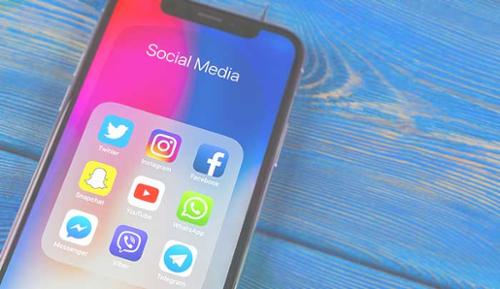Social media is a newer tool that many professionals are utilizing to network with colleagues and clients, as well as stay up to date on the news in their field. As a physician, you can utilize tools like Facebook, LinkedIn, and Twitter to stay up to date with the latest news for your specialty, patient care, or about your organization. Using social media also means that you will be on display for anyone to see, which means you want to make sure that you're not putting a bad face forward.

1. Make sure your personal social media is private.
Split your social media up into personal accounts and professional accounts. Combining the two may not be the best idea for you. Sharing pictures of your friends and family is great for your personal account, but do you want colleagues, patients, and others to see those as well? Check your personal social media accounts' privacy settings to keep those who you are not connected with away from your account.
2. Keep professional social media accounts professional.
It may be tempting to post a picture you find humorous or to display topical personal opinions, but keep in mind that your professional account may not be an appropriate platform. On platforms like LinkedIn where colleagues can connect with you or view your profile, you may want to stay away from hot-topic items that can lead to hateful discussions or cause a rift in professional relationships. Try to post or share articles that relate to your organization, research, and what's happening in your community or with colleagues. This is a great way to start conversations and avoid polarizing viewpoints.
3. Your profile picture represents you.
On your professional social media accounts, make sure your profile picture is professional as well. This may be a headshot, you in your white coat, or you presenting at a conference. Using a "selfie" that is up-close or blurry, or using a photo of you at the beach or an amusement park may not present that message. If you do not currently have a profile picture and are using the default avatar, try to have a colleague take a picture of you in your white coat standing in front of a blank wall, or look into getting a professional headshot done.
4. Watch out for who you are connected with.
Many will accept friend requests or connection requests from anyone who sends it. Keep in mind, especially if this is a mutual follow/connection, that this can lead to you being tied to someone that you do not want to be. On websites like Facebook and LinkedIn, when you accept someone to connect with you, you automatically become connected to them. On Instagram and Twitter, if someone follows you, you have the option to follow them back. Look into anyone who wants to connect with you to make sure that the content they are posting is not spam or problematic. Even if this is someone that you do not know, if you are associated with this person, it could lead to issues for you in the future with others associating you with that account.
Make sure that you are monitoring all social media accounts, whether professional or private. Security preferences are constantly being updated and revised, so stay on top of how that affects you. Also, keep in mind that the internet lasts forever, so you do not want unsavory pictures, comments, or statuses to live on even after deletion.